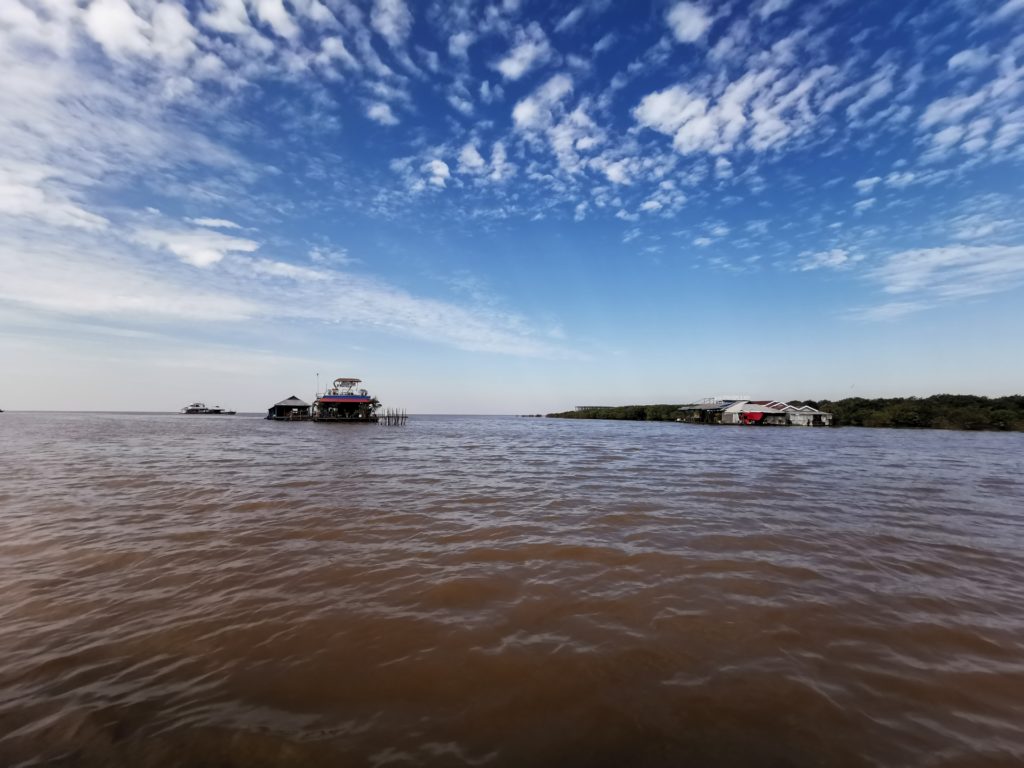Tonle Sap – the largest lake in Southeast Asia (in Cambodia)
If you plan a trip to Siem Reap, you should also plan a trip to the Tonle Sap Lake. Located in the heart of the country, not only the Siem Reap River but also the Tonle Sap River of the same name flow into the body of water

Floating restaurants on the Tonle Sap
The total volume of water makes it the largest lake in Southeast Asia. Since the beginning of the settlement of the region, the lake has had a great importance for the local population: Especially the abundance of fish in the lake and the possibility to plant rice fields there have not only significantly influenced the nutrition of the Cambodians (very many traditional dishes of the Khmer people contain fish and rice), but were quite practically an important resource to secure the nutrition of a broad population group.
But what is so special about Tonle Sap Lake? The natural spectacle in which the Tonle Sap River changes flow direction in both June and November. This in turn is related to the monsoon rains, which raise the level of the Mekong River to such an extent that the Tonle Sap River changes its direction of flow back into the Tonle Sap, flushing vast amounts of water and fish into the Tonle Sap. The Cambodians celebrate this change during the so-called Water Festival in November, when they can start catching numerous fish again.
For visitors there are numerous animals to discover in and around the lake. For example, in addition to 150 different species of fish, crocodiles, water snakes and water birds live in Tonle Sap Lake. For those who don’t like the wildlife so much, it is recommended to visit Kampong Phlouk, the floating village directly on the lake, which is a very unique destination. In its current form, this settlement has only existed for a few decades. Especially the intricate mangrove forests there are a unique phenomenon. There are only a few places in the world where visitors can explore these forest areas directly from the water in such a relaxed way by boat.
Overall, it can be said that a visit to Tonle Sap Lake in itself should be quite automatic on most travel lists through the Siem Reap region: Due to its geographical proximity to many important Khmer buildings, the lake is already “on the way” to numerous tourist itineraries that are offered by local tour operators.
However, the lake cannot be recommended as a bathing place. There are other waters and sea accesses in Cambodia that are definitely better suited for this.
Tonle Sap Lake is also struggling with overfishing and water pollution caused by the sewage that ends up in the lake via the Mekong River from neighboring countries. So especially as a visitor, you should be especially careful with nature here to avoid further damage to this delicate ecosystem.